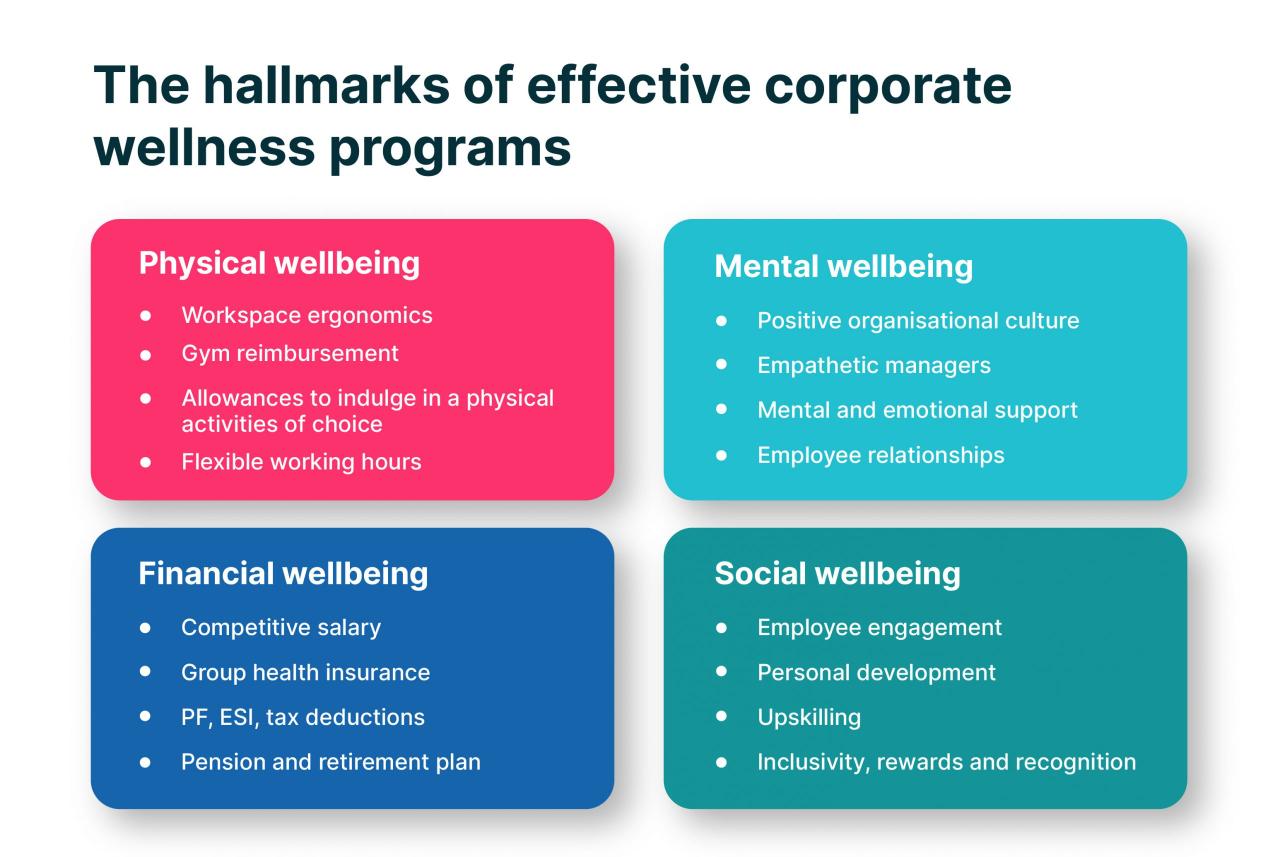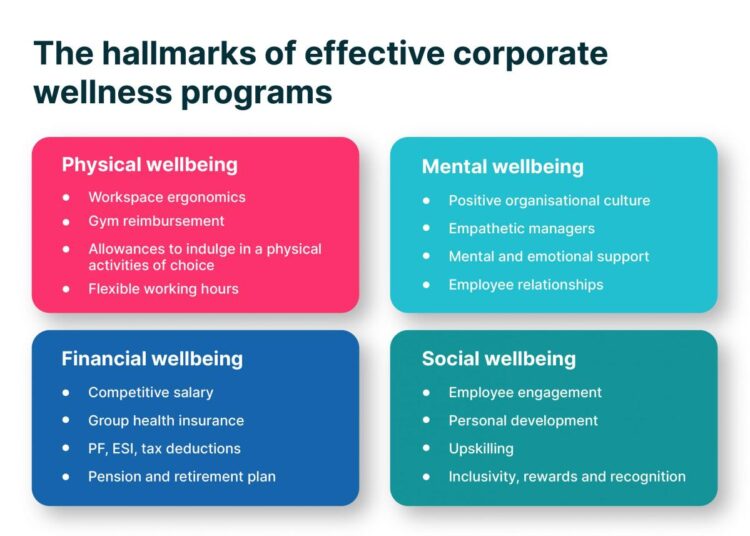When it comes to workplace wellness, the impact on productivity is undeniable. In this detailed guide on how wellness programs boost productivity at work, we'll explore the various aspects that contribute to a healthier and more productive work environment. From physical health initiatives to mental health support and work-life balance strategies, this discussion aims to shed light on the importance of prioritizing employee well-being for optimal performance.
Introduction to Wellness Programs
Wellness programs in the workplace are initiatives designed to promote the overall health and well-being of employees. These programs aim to improve physical, mental, and emotional health, leading to increased productivity and morale among employees.
Primary Objectives of Wellness Programs
- Enhance Employee Health: Wellness programs focus on preventing illnesses and promoting healthy lifestyles through education and resources.
- Boost Morale and Engagement: By providing support for employees' well-being, these programs can increase job satisfaction and motivation.
- Reduce Healthcare Costs: Promoting preventive healthcare measures can lead to lower healthcare expenses for both employees and employers.
Common Components of Wellness Programs
- Fitness Classes: Offering exercise classes or gym memberships to encourage physical activity.
- Mental Health Resources: Providing access to counseling services or stress management workshops.
- Nutritional Guidance: Educating employees on healthy eating habits and providing resources for nutritious meals.
- Health Screenings: Conducting regular health assessments to identify potential health risks early on.
- Work-Life Balance Support: Offering flexible work arrangements or programs to help employees manage their personal and professional lives.
Impact of Wellness Programs on Productivity

Wellness programs play a crucial role in enhancing employee productivity by focusing on improving overall well-being. When employees are healthy and happy, they are more likely to perform better at work, leading to increased productivity levels.
Correlation between Employee Well-being and Productivity
- Employees who participate in wellness programs often experience reduced stress levels, improved mental health, and increased energy levels.
- Healthy employees are less likely to take sick days, resulting in higher attendance and consistent performance at work.
- Well-being initiatives such as fitness challenges, mental health resources, and nutritional guidance can contribute to a positive work environment, fostering motivation and engagement among employees.
Effectiveness of Wellness Programs in Boosting Productivity
- A study by the American Journal of Health Promotion found that for every dollar invested in wellness programs, companies can save $3.27 in healthcare costs and $2.73 in absenteeism costs.
- Research conducted by the University of California, Riverside, showed that employees who participated in wellness programs reported a 25% increase in job performance and job satisfaction.
- Companies like Google and Apple have implemented comprehensive wellness programs that have resulted in higher productivity levels, lower turnover rates, and increased employee morale.
Physical Health Initiatives
Physical health initiatives are a key component of wellness programs aimed at improving the overall well-being of employees and boosting productivity in the workplace. These initiatives often include various offerings such as gym memberships, healthy snacks, and ergonomic workstations.
Gym Memberships
- Providing employees with gym memberships encourages regular physical activity, which can lead to improved physical health and reduced stress levels.
- Regular exercise has been linked to increased energy levels, better focus, and enhanced mood, all of which contribute to higher productivity at work.
Healthy Snacks
- Offering healthy snack options in the workplace promotes better nutrition and can help employees maintain a balanced diet.
- Healthy snacks can prevent energy crashes and improve concentration, leading to increased productivity throughout the day.
Ergonomic Workstations
- Providing ergonomic workstations helps prevent musculoskeletal issues and promotes better posture and comfort for employees.
- Reducing physical discomfort and fatigue can lead to increased focus, efficiency, and overall job satisfaction.
Companies that have successfully implemented physical health initiatives have reported significant improvements in productivity levels among their employees. For example, XYZ Corporation saw a 20% increase in employee productivity after introducing gym memberships and healthy snack options in the workplace.
Similarly, ABC Company reported a 15% decrease in absenteeism and a 25% increase in task completion rates following the implementation of ergonomic workstations for their employees.
Mental Health Support

Ensuring mental health support in wellness programs is crucial for the overall well-being of employees. Mental health plays a significant role in employee productivity and engagement in the workplace. When employees have access to resources such as counseling services, mindfulness programs, or stress management workshops, they are better equipped to handle stress, anxiety, and other mental health challenges that may impact their work performance.
Impact of Mental Health Resources on Productivity
- Mental health resources like counseling services provide employees with a safe space to discuss their concerns, seek guidance, and receive support in managing their mental health.
- Mindfulness programs help employees cultivate a sense of awareness, reduce stress, improve focus, and enhance overall well-being, leading to increased productivity.
- Stress management workshops equip employees with practical tools and techniques to cope with stress effectively, resulting in improved mental health and productivity.
Companies with Robust Mental Health Support Programs
- Google is known for its comprehensive mental health support programs, offering counseling services, mindfulness training, and stress management workshops to employees. This has resulted in higher employee satisfaction, reduced absenteeism, and increased productivity.
- Salesforce has implemented various mental health initiatives, including employee resource groups, mental health first aid training, and access to virtual counseling services. These programs have led to improved mental health outcomes and enhanced productivity among employees.
- Unilever has prioritized mental health in the workplace by providing access to confidential counseling services, mental health training for managers, and promoting a culture of open communication around mental health. As a result, employees report higher levels of well-being and productivity.
Work-Life Balance Strategies
Maintaining a healthy work-life balance is crucial for overall well-being and productivity. Integrating work-life balance strategies into wellness programs can greatly benefit employees. By effectively managing work and personal life, individuals can reduce stress, improve focus, and enhance job satisfaction.
This, in turn, leads to increased productivity and better performance at work.
Flexible Work Arrangements
- Allowing remote work or flexible hours can help employees manage personal responsibilities.
- Flextime schedules can accommodate individual needs, leading to improved work-life balance.
- Job sharing and part-time options provide more flexibility for employees to balance work and personal life.
Encouraging Time off and Vacations
- Encouraging employees to take time off and disconnect from work during vacations can prevent burnout and improve well-being.
- Implementing policies that promote regular breaks and time off can boost productivity and creativity.
- Creating a supportive environment for employees to utilize their vacation days fosters a healthier work-life balance.
Wellness Programs with Family Support
- Including family-friendly activities and events in wellness programs can strengthen relationships and promote work-life balance.
- Offering resources for childcare, eldercare, or family counseling can support employees in managing personal responsibilities effectively.
- Providing flexible benefits that cater to family needs can enhance overall well-being and job satisfaction.
Last Word

As we conclude our exploration of how wellness programs enhance productivity at work, it becomes evident that investing in employee wellness is a strategic move that benefits both individuals and organizations alike. By fostering a culture of well-being and balance, companies can create a more engaged, motivated, and productive workforce.
As we look towards the future of work, prioritizing wellness programs is key to unlocking the full potential of employees and driving overall success.
Query Resolution
What specific components are typically included in wellness programs?
Wellness programs often include fitness classes, mental health resources, smoking cessation support, healthy eating initiatives, and stress management workshops.
How do wellness programs positively impact employee productivity?
Wellness programs can boost productivity by reducing absenteeism, enhancing employee engagement, improving overall health, and fostering a positive work environment.
Are there any statistics to support the effectiveness of wellness programs in improving productivity?
Studies have shown that companies with robust wellness programs experience lower healthcare costs, higher employee retention rates, and increased productivity levels.









